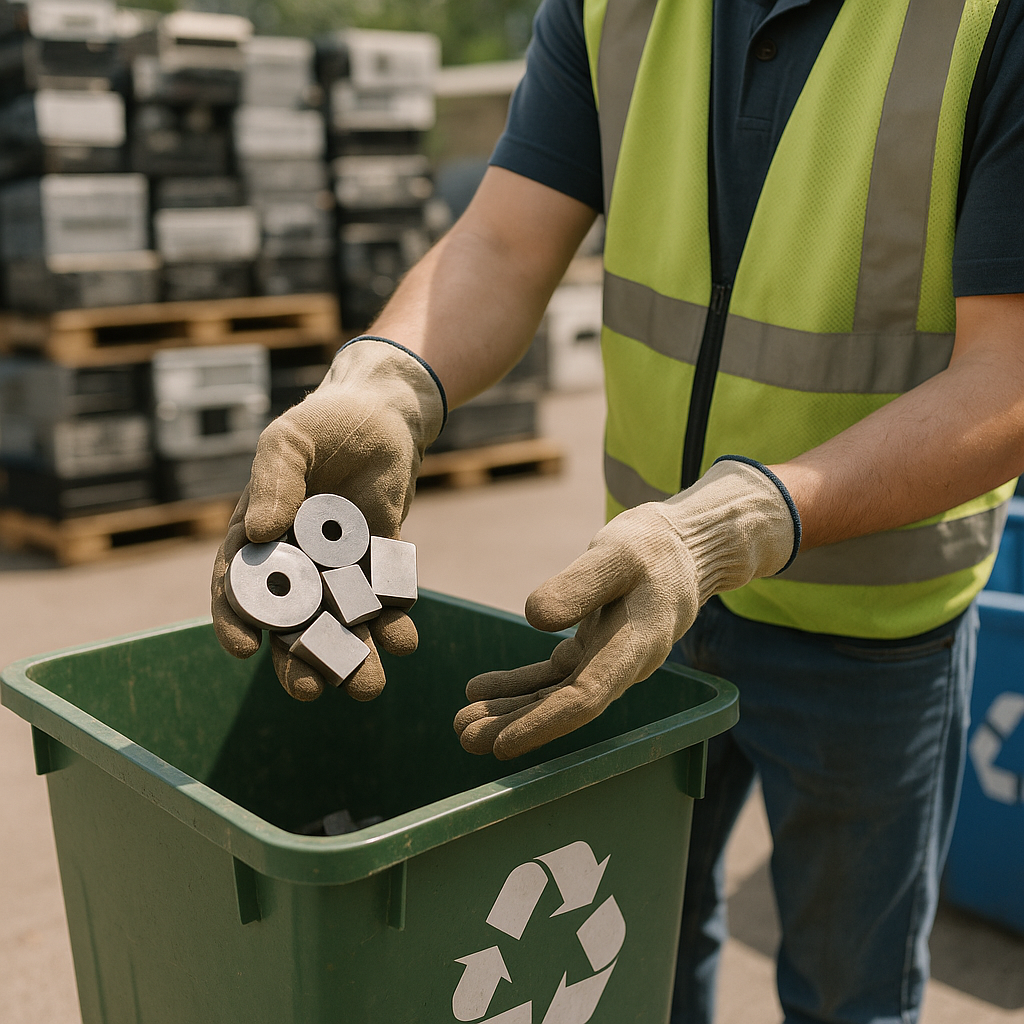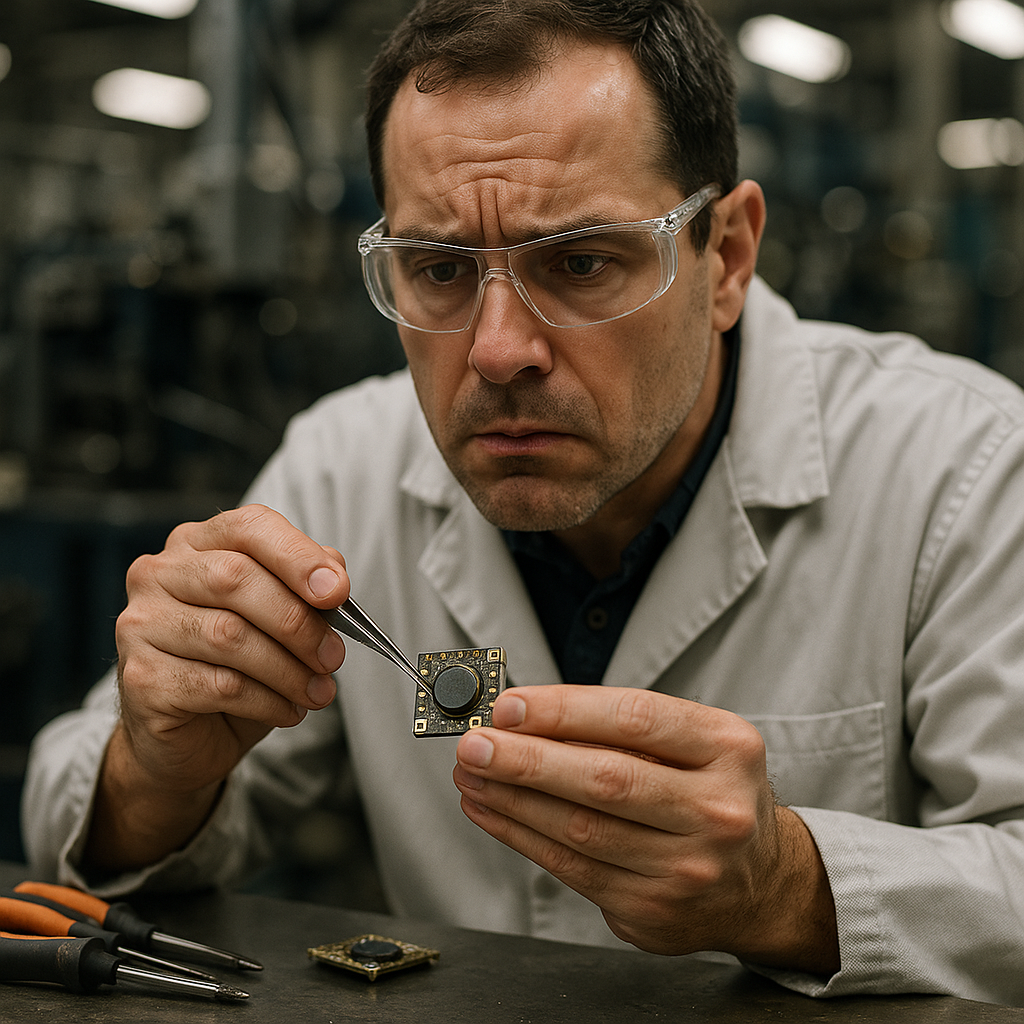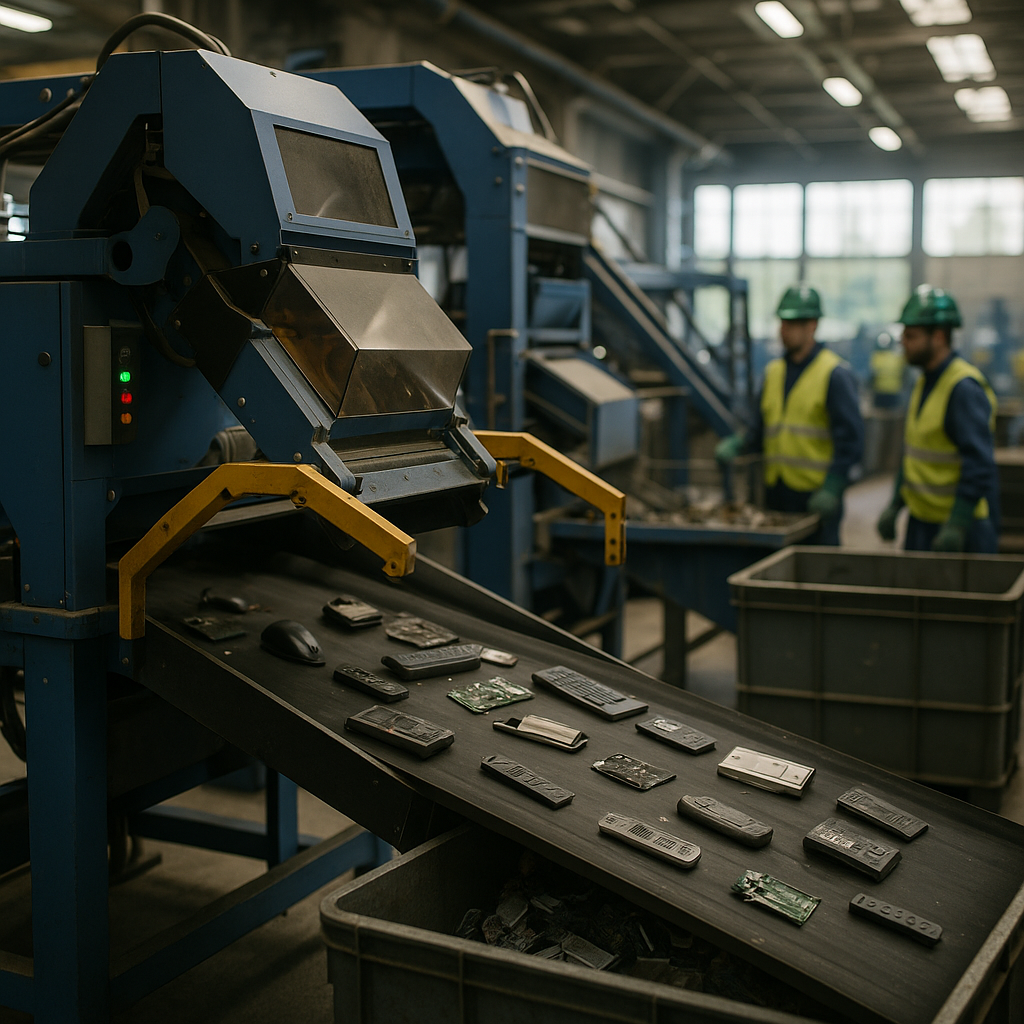5901 Botham Jean Blvd, Dallas, TX 75215
Neodymium Magnet Recycling: Securing Rare Earth Supply for a Sustainable Future
September 5, 2025Less than 1% of rare earth elements are currently recycled worldwide. This figure highlights a significant gap in our resource management, especially considering these elements power everything from smartphones to wind turbines. Neodymium magnet recycling addresses this issue by recovering valuable rare earth elements from discarded magnets.
Neodymium magnets, despite their name, contain approximately 30% rare earth elements by weight. These powerful components end up in countless products we use daily—hard drives, speakers, electric vehicles, and industrial machinery. When these products reach the end of their life cycle, the magnets typically head to landfills, wasting materials that require environmentally harmful mining practices to obtain anew.
The recycling process involves collecting, processing, and extracting these elements from discarded magnets. Methods range from hydrometallurgical techniques using acid dissolution to direct hydrogen processing that maintains the original composition. The recovered materials then return to manufacturing, creating a circular economy that reduces environmental impact and secures domestic supply chains for these increasingly critical resources.
Why is Recycling Neodymium Magnets Important?

Recycling neodymium magnets significantly reduces environmental impact compared to mining new materials. Producing these powerful magnets from raw materials generates toxic waste and radioactive byproducts that damage ecosystems. By implementing effective recycling processes, we can minimize environmental destruction while maintaining access to these critical materials.
Supply chain security is another compelling reason for recycling these magnets. China currently dominates global production of rare earth elements, creating vulnerabilities in international supply chains. The COVID-19 pandemic demonstrated how sensitive industries are to disruptions in material flows. Developing domestic recycling capabilities provides a secure, renewable source of neodymium independent of foreign suppliers.
The rapidly growing demand for neodymium magnets makes recycling increasingly urgent. These powerful magnets are essential components in technologies advancing the transition to a greener economy:
- Electric vehicles – The automotive industry currently uses more neodymium than all other electronics industries combined.
- Wind turbines – Global installations jumped 53% in 2020 according to the Global Wind Energy Council.
- Medical devices – MRI machines rely on neodymium magnets for diagnostic imaging.
- Consumer electronics – From smartphones to hard drives, these magnets enable smaller, more powerful devices.
Despite their importance, less than 1% of rare earth elements are currently recycled globally. This staggering statistic highlights the massive untapped potential in magnet recycling. Analysts warn of potential shortages without improved recovery systems as demand continues to rise.
A real-world example shows the benefits of neodymium recycling. REEcycle, a Texas-based company, has developed a proprietary recycling process achieving 99.8% recovery efficiency from end-of-life products. Their low-waste approach allows manufacturers to reuse these valuable materials in advanced technical equipment while reducing carbon emissions and eliminating the need for harmful mining.
The economic benefits extend beyond environmental concerns. Recycling creates new revenue streams from electronic waste that would otherwise end up in landfills. Companies adopting recycling practices gain competitive advantages through reduced waste management costs and enhanced reputations as environmentally responsible entities.
Advanced recycling technologies continue to evolve, making the process increasingly efficient. Hydrometallurgical processes and hydrogen decrepitation techniques enable the recovery of high-purity neodymium suitable for manufacturing new magnets. Studies indicate this recycled material can be produced with 35% less energy consumption compared to virgin production in China.
What Challenges Does the Neodymium Magnet Recycling Industry Face?

Despite rare earth elements’ crucial role in modern technology, the neodymium magnet recycling industry faces significant challenges. Current global recycling rates for these materials are below 1%, highlighting an urgent need for improved recovery methods. These powerful magnets, essential for technologies from smartphones to wind turbines, contain valuable materials that are increasingly hard to source through traditional mining.
Technical Extraction Difficulties
The physical integration of neodymium magnets within devices presents substantial recycling challenges. These components are often embedded deep within electronic equipment, making access both time-consuming and costly. Manufacturers’ use of industrial-grade adhesives further complicates the extraction process.
The magnets’ physical properties also create complications. In larger applications like electric vehicle motors, magnetized components can be hazardous to handle, requiring specialized equipment and safety protocols. This adds complexity and cost to the recycling process, deterring many potential recyclers from entering the market.
A significant obstacle is the varying compositions of magnet waste. Neodymium magnets can contain differing percentages of rare earth elements depending on their application, complicating the implementation of standardized recycling processes. Coatings to prevent corrosion can contaminate recycled material if not properly removed.
Collection and Infrastructure Gaps
Without established systems for gathering end-of-life products containing rare earth magnets, creating a stable supply chain for recycled materials remains challenging. The infrastructure for collecting these materials is underdeveloped compared to recyclables like aluminum or paper.
The unpredictability of waste streams further complicates recycling efforts. The composition, volume, and availability of end-of-life products containing magnets vary widely, making it hard for recyclers to confidently invest in specialized equipment and processes.
The absence of product labeling requirements compounds this problem. Recyclers often do not know which products contain neodymium magnets or their location within a device, increasing processing time and costs as materials must be manually inspected and sorted before recycling can begin.
Processing and Purification Challenges
The hydrogen-based recycling process (HPMS), among the most promising methods, requires high-purity feedstock to operate efficiently. Achieving this purity is challenging when processing post-consumer goods. Even small amounts of contaminants like nickel and copper from electronic components can reduce the magnetic properties of recycled materials by up to 25%.
Separating rare earth elements from other materials in the magnet is technically demanding. Hydrometallurgical processes can be energy-intensive and produce waste streams requiring careful management. While pyrometallurgical methods offer high recovery rates, they often have prohibitive energy consumption costs when processing materials with low rare earth content.
According to research, “Compared with wet and fire methods, biological methods have better selectivity at lower rare earth concentrations. However, currently, biological methods have poor kinetic conditions and low recovery rates and are difficult to accurately control.”
Economic and Market Barriers
Recycled magnets must compete with new ones from primary sources, which often benefit from economies of scale and established supply chains. This economic reality makes it difficult for recycled materials to gain market share without policy interventions or price premiums for sustainable products.
The lack of standardization in magnet compositions complicates recycling. Without consistent material inputs, recyclers struggle to develop efficient processes for the wide variety of magnets found in end-of-life products. Additionally, no widely accepted certification system for recycled magnets currently exists, leaving manufacturers hesitant to use recycled materials in high-performance applications.
The cost of recycling rare earth elements often exceeds that of mining and refining new materials. This economic imbalance discourages investment in recycling technologies and facilities, creating a cycle that is difficult to break without external incentives or regulatory requirements.
Design Limitations
Many products are not designed with recyclability in mind. Components containing rare earth magnets are often glued or encased in ways that make disassembly difficult without damaging the magnet or surrounding parts. This design approach prioritizes performance and durability during a product’s use phase but creates significant challenges at end-of-life.
The lack of standardization in product design means recycling processes must adapt to handle a wide array of configurations. This flexibility requirement increases costs and complexity, reducing the economic viability of recycling operations.
Manual disassembly remains labor-intensive and economically challenging in regions with high labor costs. While automation could potentially address this issue, the variety of product designs makes developing universal disassembly systems difficult.
| Recycling Method | Advantages | Challenges |
|---|---|---|
| Direct Recycling | Retains original alloy composition, reducing raw material need. | Quality may vary depending on waste material condition. |
| Hydrometallurgical Recycling | Highly effective at recovering rare earth elements. | Energy-intensive and generates hazardous waste. |
| Pyrometallurgical Recycling | Effective for processing large quantities of waste. | Energy-intensive and requires sophisticated equipment. |
| Electrochemical Recycling | Potential for more environmentally friendly and energy-efficient recycling. | Still under development and not widely adopted. |
Opportunities for Innovation
Despite these challenges, the field presents significant opportunities for innovation. Developing new techniques for magnet extraction and processing could dramatically improve recycling rates. Researchers are exploring methods like selective chlorination and molten salt extraction that might offer more efficient separation of rare earth elements.
Improvements in product design could substantially enhance recyclability. Designing products for easy disassembly and clearly marking components with rare earth magnets would simplify the recycling process and improve recovery rates.
As technologies improve and stakeholders collaborate more effectively, the prospects for higher recycling rates will continue to improve. These efforts are essential not only for conserving valuable resources but also for reducing the environmental impact of primary extraction and ensuring a stable supply of these critical materials for future technologies.
What is the Future of Neodymium Magnet Recycling?

The future of neodymium magnet recycling is promising as the global demand for this crucial rare earth element continues to rise. Projections suggest that demand could surpass supply by 250% by 2030, prompting rapid advancements in recycling. Initiatives like the EU-funded SUSMAGPRO project have achieved notable success, using robotic disassembly techniques that offer 25% higher recovery rates than traditional methods.
Establishing circular supply chains for these valuable materials is essential for a sustainable energy transition. The EU aims to meet 15% of its rare earth element needs through recycling by 2030, an ambitious yet necessary target considering that currently, only 1% of these materials are recycled worldwide. As technologies advance and products are designed with end-of-life recycling in mind, neodymium recycling will be vital in supporting clean energy technologies without the environmental impact of increased mining.
For expert guidance on recycling rare earth materials and other valuable metals, contact Okon Recycling at 214-717-4083. Our specialized expertise can help you implement sustainable recycling solutions that support a more circular economy.
